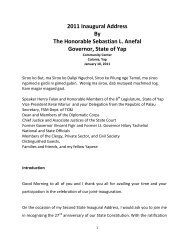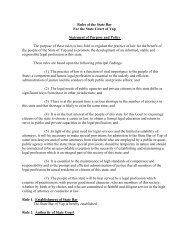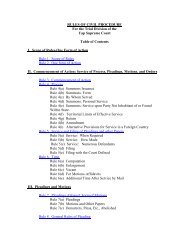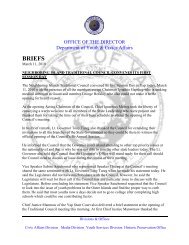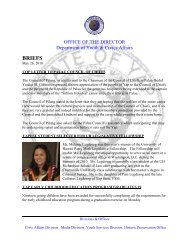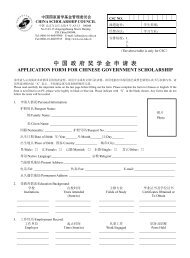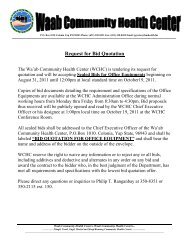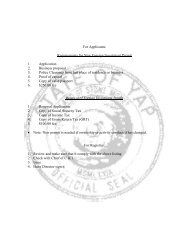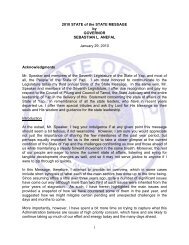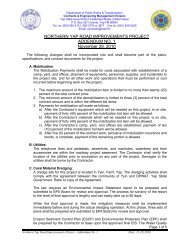Yap Summit Community Sector - Yap State Government
Yap Summit Community Sector - Yap State Government
Yap Summit Community Sector - Yap State Government
You also want an ePaper? Increase the reach of your titles
YUMPU automatically turns print PDFs into web optimized ePapers that Google loves.
YAP STATE GOVERNMENT<br />
Figure 18 The Role of Consumers Choices in the Economy<br />
As Cameron (1991) highlighted in a FAO study on Food Security in the FSM, “an imported food item is<br />
qualitatively essential if it contains a nutritional component that cannot be obtained within the local<br />
environment at any price … [or] prices are too high … to afford”.<br />
Food security is another lens through which the contradiction of “self-reliance” in <strong>Yap</strong> can be examined. In the<br />
Report to the US Congress on the “First 5 years Review of the Compact of Free Association with the Federated<br />
<strong>State</strong>s of Micronesia (2010)” the US Department of Interior defines as “economically self-sufficient” an economy<br />
that “produces goods and services in sufficient quantities to meet the demands of the population.” What is not<br />
clear in this definition is whether the “goods” mentioned are “essential goods” as highlighted by Cameroon (1991)<br />
or goods pushed into the local economy by a “Cargo Cult”. In fact, there is no poverty in <strong>Yap</strong>, if poverty is defined<br />
as insufficient access to food. In <strong>Yap</strong> the “severity of poverty” target that measures the first Millennium<br />
Development Goal (MDG) defining Poverty, Hardship and Hunger is only 1.7 (Millennium Development Goals &<br />
The Federated <strong>State</strong>s of Micronesia, Status Report 2010). What is curious is that despite the fact that subsistence<br />
agriculture is practiced by every family on the island the food poverty line for <strong>Yap</strong> is set at 6,394 USD per day<br />
(Millennium Development Goals & The Federated <strong>State</strong>s of Micronesia, Status Report 2010). It is therefore<br />
reasonable to suggest that the food poverty line as set actually includes imported food that was defined through<br />
the “Cargo Cult” as “essential”, despite the complete availability of nutritional goods on the island. In this respect it<br />
is worth highlighting how the high “vulnerability” of Small Island <strong>State</strong>s is due to, within other factors, a high<br />
“dependence on strategic imports” (Briguglio, 1995). What should be taken under consideration is the extended<br />
definition of “strategic imports” that aid dynamics constructed over time. Food and beverages represent the best<br />
sample in this respect, and they are within the highest components of household expenditures according to the<br />
Consumer Price Index (CPI). In fact in 2010, of the total basket of items attributed to <strong>Yap</strong>ese households that was<br />
weighted as being 18.5% of the total FSM purchases (100%), food was set as being 4.8%, beverages 1.9%, and<br />
apart from fuel which was weighted 0.8%, all the other commodities were below 0.3% (FSM SBOC, 2011). Soft<br />
drinks, alcohol and tuna cans are within the main items imported and sold by local retail businesses (DOI and<br />
Pacific Island Training Initiative, 2010). All of these items have local substitutes, namely coconut water, tuba and<br />
fresh tuna. Not only do all these items have a local substitute, but each family has access to these products<br />
through land, which makes them affordable to anyone in economic terms, while equivalent imported items<br />
undermine the extent of the impact on the local economy of retail businesses: if the items sold would be local<br />
products, the impact of the retail business on the <strong>Yap</strong>ese economy would be greater.<br />
44 | P a g e



